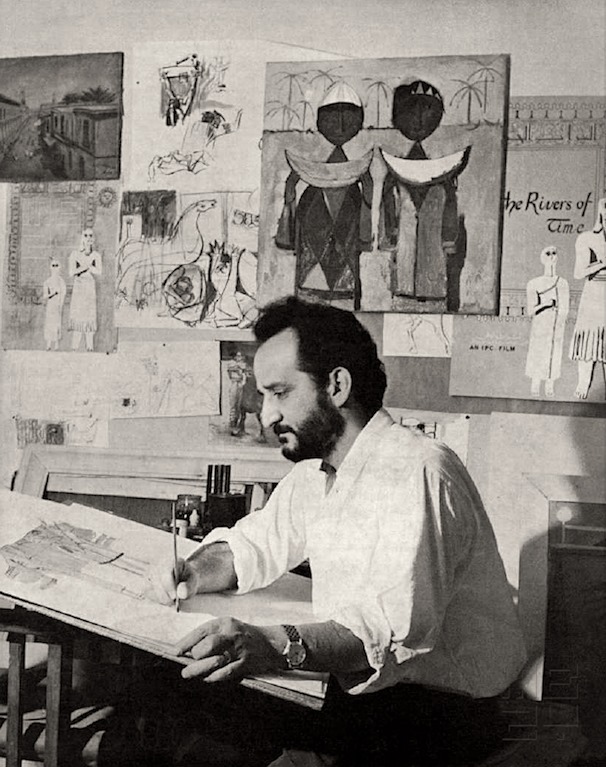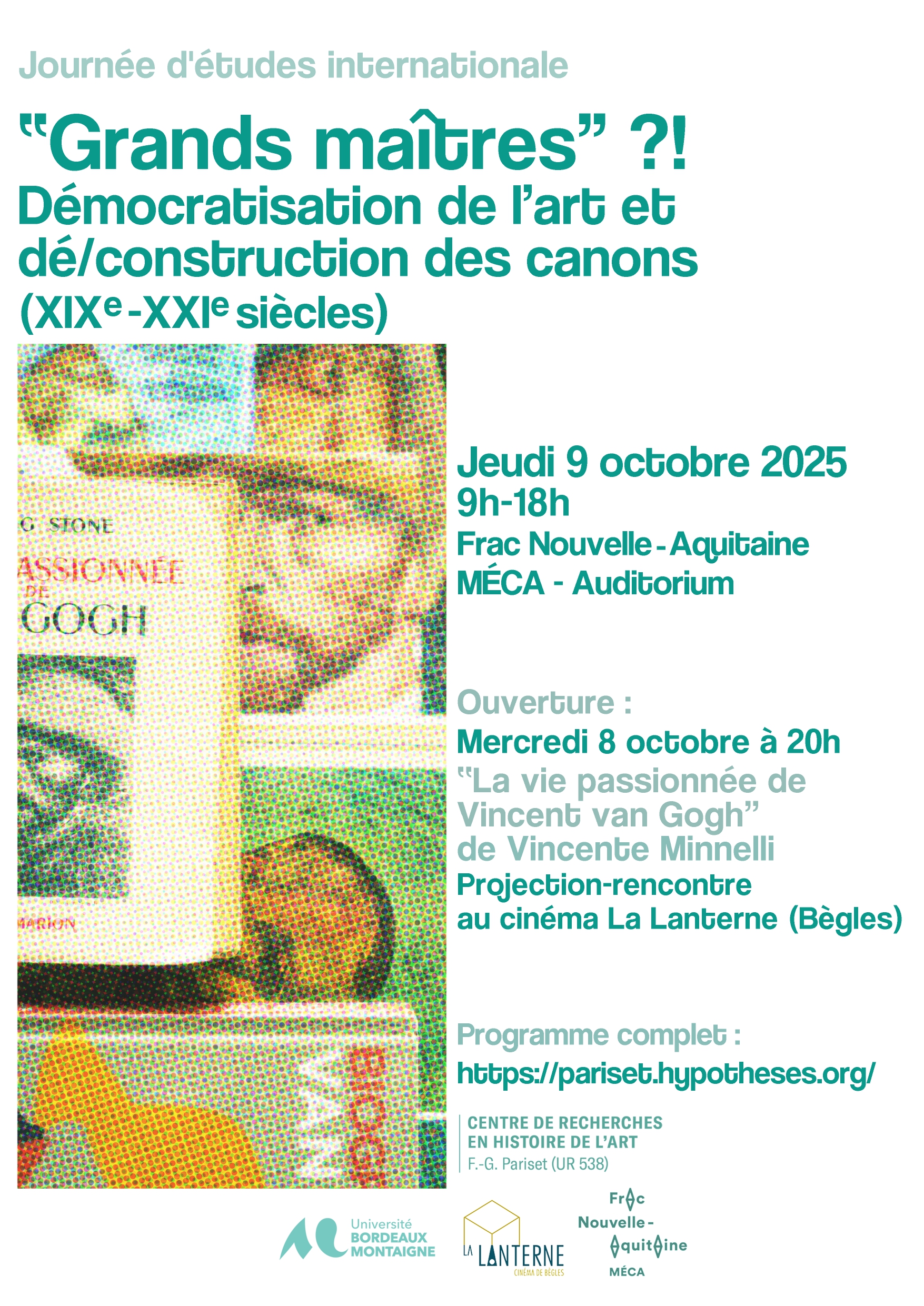
Jawad Salim in his studio, Baghdad, 1957. (Jabra Ibrahim Jabra, Jawad Salim and the Monument of Freedom: A Study of His Works and Views, Baghdad, Ministry of Information, General Culture Directorate, 1974, p. 8).

LECTURE
Jawad Salim (1919-1961), « père de l’art moderne irakien » : supports et récits d’une construction
Zouina Ait Slimani
9.10.25 – Auditorium, Frac Nouvelle-Aquitaine MÉCA, France
This lecture examines how Jawad Salim emerged as an essential reference point in modern Iraqi art and analyzes the mechanisms behind his posthumous canonization. As founder of the Baghdad Group for Modern Art in 1951 and creator of the celebrated Naṣb al-ḥurriyya [Monument of Freedom] (1958-1961), Salim embodied an original artistic synthesis that drew simultaneously from Iraqi cultural heritage and Western avant-garde movements. His premature death in 1961 at age 42 paradoxically accelerated the mythologization of both his work and persona. This legend gradually consolidated through a complex network of mediations: retrospective exhibitions, institutional catalogs, academic publications, and official discourse all contributed to shaping the image of the "miracle of Iraqi art" and the "founding father" of Iraqi artistic modernity. The study of this legitimation process reveals broader issues underlying the construction of canonical figures in contemporary Arab world art. It also questions the decisive role of media and cultural ecosystems in establishing artistic hierarchies, as well as the mechanisms through which certain artist biographies acquire an exemplary and normative dimension. Through the Salim case, this lecture offers critical reflection on artistic patrimonialization processes and the transnational circulation of modernity models within the post-colonial Middle Eastern context.
